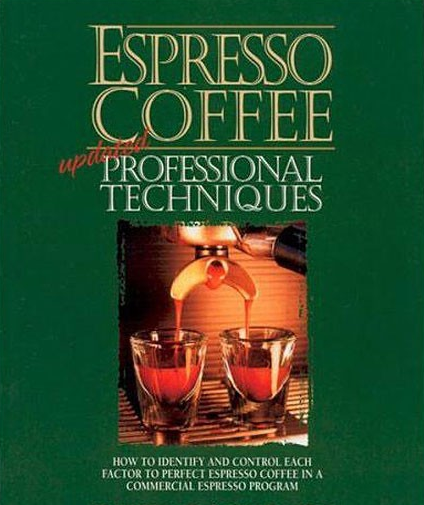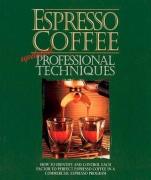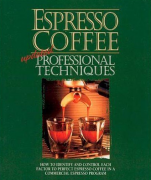Chapter 3 of "ESPRESSO COFFEE" what is meant by "variable cause"

(Ⅲ)
Chapter III Environmental factors-- temperature, Sunshine and humidity
What is meant by "variable cause"
In the process of cooking espresso, the factors that will affect the quality of espresso are called variants. Some variables are caused by different "human" skills, while others are not easy to control. For example, the environment of nature is always changing all the time. In the face of these uncertainties, the bar staff must maintain the mobile adjustment of cooking at any time in order to maintain the consistent quality.
God is always elusive.
I started my business in 1988, when I started as a vendor. I soon found that cooking espresso outdoors is much more affected by the weather than when cooking it indoors. If the temperature is low and the humidity is moderate (relative humidity 50-60%), the ground coffee can be placed for 4 minutes without affecting the flavor. However, it is important to note that ground coffee powder is as troublesome as the weather. The moment the beans are ground into powder, oxidation begins.
When the weather is hot, the coffee will stale faster. Ground coffee powder is faster! Whether it's the heat, the dry air, or the sun shining directly on the beans, it's espresso's nightmare. Because such an environment will cause the moisture in the beans to be quickly lost in the grinding process. The fleeing water molecules take away the aromatic ingredients in the beans, and the coffee tastes much worse.
Of course, it's impossible to cover everything, but it's helpful to pay attention to a few details:
Only grind enough coffee powder at a time, don't grind too much and save the rest for the next cup.
The lid of the bean grinder should be covered and can be sealed with electrical tape.
Coffee powder and compaction should be done quickly and accurately, so that there is no gap in the dry air.
In the shop, we found that the best way is to grind only when there are guests, and only this cup is enough.
Even if you are so careful, you can cook a great espresso on a cool October day, but it is still difficult to do the same outside in August. I'm afraid the only way to cook an espresso appreciated by experts is to hide indoors. Because the indoor environment is easier to control, the vendor style of cooking will probably be phased out. "High temperature" and "low humidity" (WebBarista: the United States is relatively dry, often you will be "electrocuted" when you open the door. I'm afraid Taiwan has to worry about the high humidity. Will deal a fatal blow to coffee.
What are we going to do?
When buying beans, buy a small amount of beans many times, about once every five days. The beans in stock should be sealed and stored in the basement, or in a cool place. (when it comes to the freshness of beans, we will discuss them in more detail.)
Outside in Seattle in August, our stall did this: we put two cups of beans at a time (used up in about 15 minutes), and when the beans were still on standby in the funnel above the bean grinder, we lined a piece of white paper inside the funnel for fear that the sun would shine directly into the beans and to keep out some heat. I cherish the beans very much.
Baby! It's very cold outside!
When the weather is very cold, it is also a challenge to make coffee outdoors. Because the filter handle cools faster, all espresso machines expose the outlet head, filter and handle. These metal parts dissipate heat easily. Although the espresso machine is designed to keep the temperature of these important parts constant. (of course, this section of the way from the liquid down to the cup should be included.) In winter, the temperature still drops by 10 degrees.
To solve the problems caused by low temperature, we need some common sense:
Lock your hand on the outlet for as long as possible to keep warm (don't hold the handle and shake it around when you fart with a customer.) All actions should be "go, go! go, go!" Grind the coffee, quickly knock the residue in the handle, and immediately fill it with fresh coffee powder. The shorter the time, the less the degree of cooling.
Preheat the handle and outlet head, grind down a cup of coffee powder and start the pump to allow hot water to flow through the handle and used coffee powder. Be careful not to use more than 2 ounces of hot water, so as not to destroy the heat balance of the machine and lower the water temperature.
"moisture" is the culprit.
The ground coffee powder has strong hygroscopicity. When the surrounding environment is relatively moderate, it will absorb moisture from it. When the surrounding environment is relatively moderate, it will release moisture. If the humidity in the environment is very heavy, the packing will be tight and the extraction rate will be reduced. Therefore, it is necessary to cook espresso at the right time.
When cooking espresso, we pay great attention to how much water passes through the coffee cake every second. Espresso's "golden law of flow rate" is: "whether it is a single or double dose, the extraction time is about 25 seconds." In this way, you can extract delicious ingredients as much as you can, while at the same time extracting the least amount of caffeine and unpalatable substances. (as long as the filter of single dose and double dose are of the same shape and depth, the best extraction time will be the same.)
To control the "25-second extraction time", the method used in my store is to keep all other variables unchanged and only adjust the grinding thickness (dose and packing pressure also remain the same to reduce variables.)
Coffee is very sensitive to moisture, and we train the bar staff to fine-tune it according to the extraction time, even when the moist air on the sea blows in.
Adjust the timbre of the violin
When cooking espresso, keep the filling weight and dosage unchanged, and only change the thickness of grinding.
When the moisture increases, the coffee will absorb moisture, the filling pressure will be relatively tight, and the resistance to water pressure is also stronger. In order to maintain the "25-second extraction time", adjust the grinding degree a little bit at this time.
When the moisture decreases, adjust the grinding degree a little bit.
Of course, we don't keep an eye on the hygrometer while making coffee. Having said so much, I just want to tell you why the extraction time of coffee is constantly changing on the same day.
You should think of yourself as a musician adjusting the timbre of the violin: adjust the body of the violin with slight changes in the temperature and humidity of the environment. It resonates beautifully.
Selected from: ESPRESSO COFFEE: Professional Techniques 1996
Important Notice :
前街咖啡 FrontStreet Coffee has moved to new addredd:
FrontStreet Coffee Address: 315,Donghua East Road,GuangZhou
Tel:020 38364473
- Prev

Chapter 4 of "ESPRESSO COFFEE" Espresso bean grinder
(Ⅳ) when the Espresso bean grinder Espresso cooks something wrong, it is often difficult to find out the exact reason. That is because there are too many reasons for making good coffee and are related to each other. As long as there is a little mistake (such as the beans are not fresh, the hot water temperature is not right), a cup of espresso will be ruined! The quality of the bean grinder is one of the most important factors. Why is the bean grinder this
- Next

Chapter 2 of "ESPRESSO COFFEE" aromatic components dissipate easily
(Ⅱ) aromatic ingredients tend to dissipate the rich aroma of fresh coffee that has inspired poets for hundreds of years. In order to capture these aromas in coffee cups, all kinds of beautiful shapes and strange coffee machines have come out one after another, thus achieving this arduous super task. It is necessary to make the brewed coffee as fragrant as the freshly ground coffee.
Related
- Beginners will see the "Coffee pull flower" guide!
- What is the difference between ice blog purified milk and ordinary milk coffee?
- Why is the Philippines the largest producer of crops in Liberia?
- For coffee extraction, should the fine powder be retained?
- How does extracted espresso fill pressed powder? How much strength does it take to press the powder?
- How to make jasmine cold extract coffee? Is the jasmine + latte good?
- Will this little toy really make the coffee taste better? How does Lily Drip affect coffee extraction?
- Will the action of slapping the filter cup also affect coffee extraction?
- What's the difference between powder-to-water ratio and powder-to-liquid ratio?
- What is the Ethiopian local species? What does it have to do with Heirloom native species?

